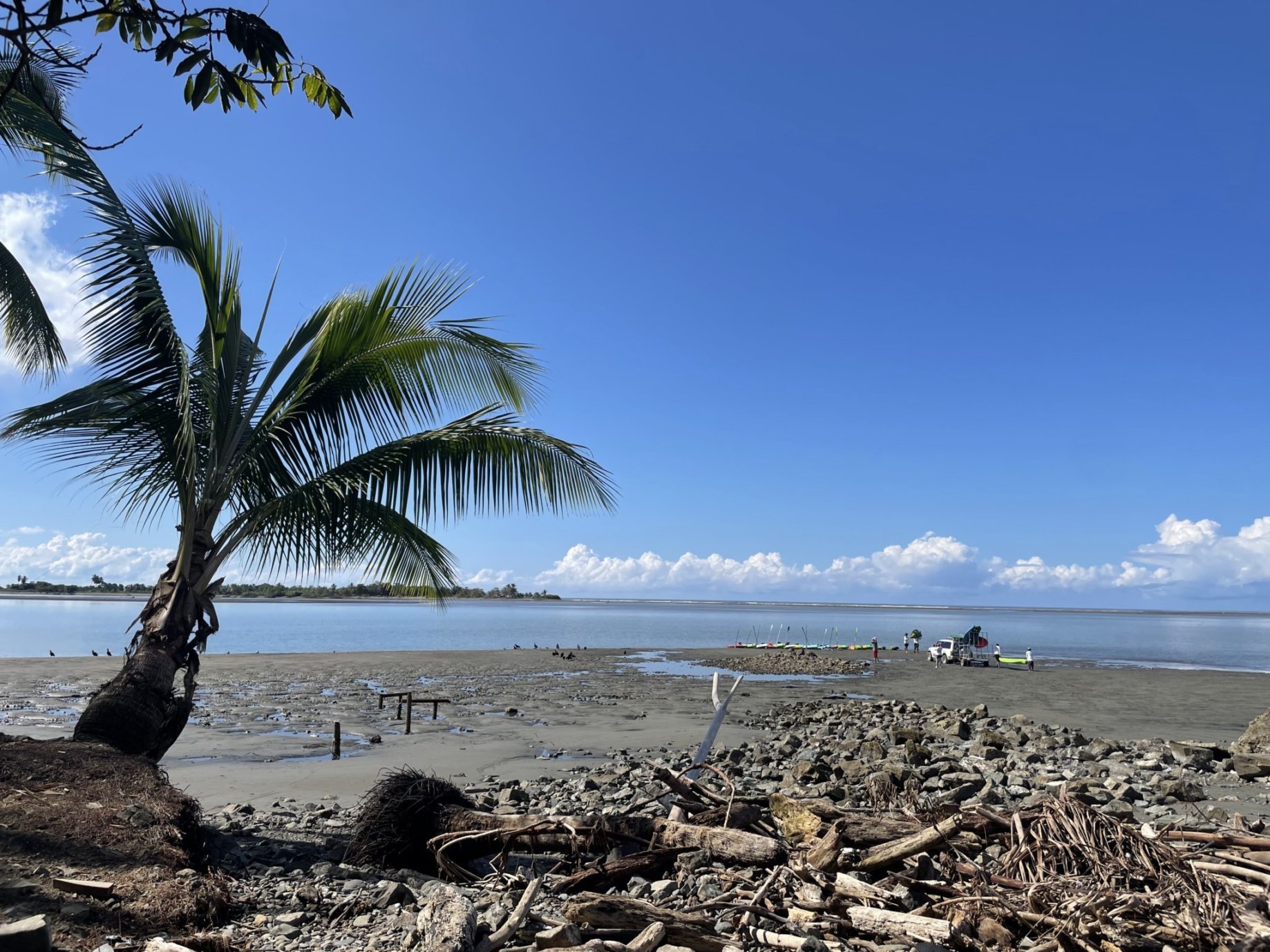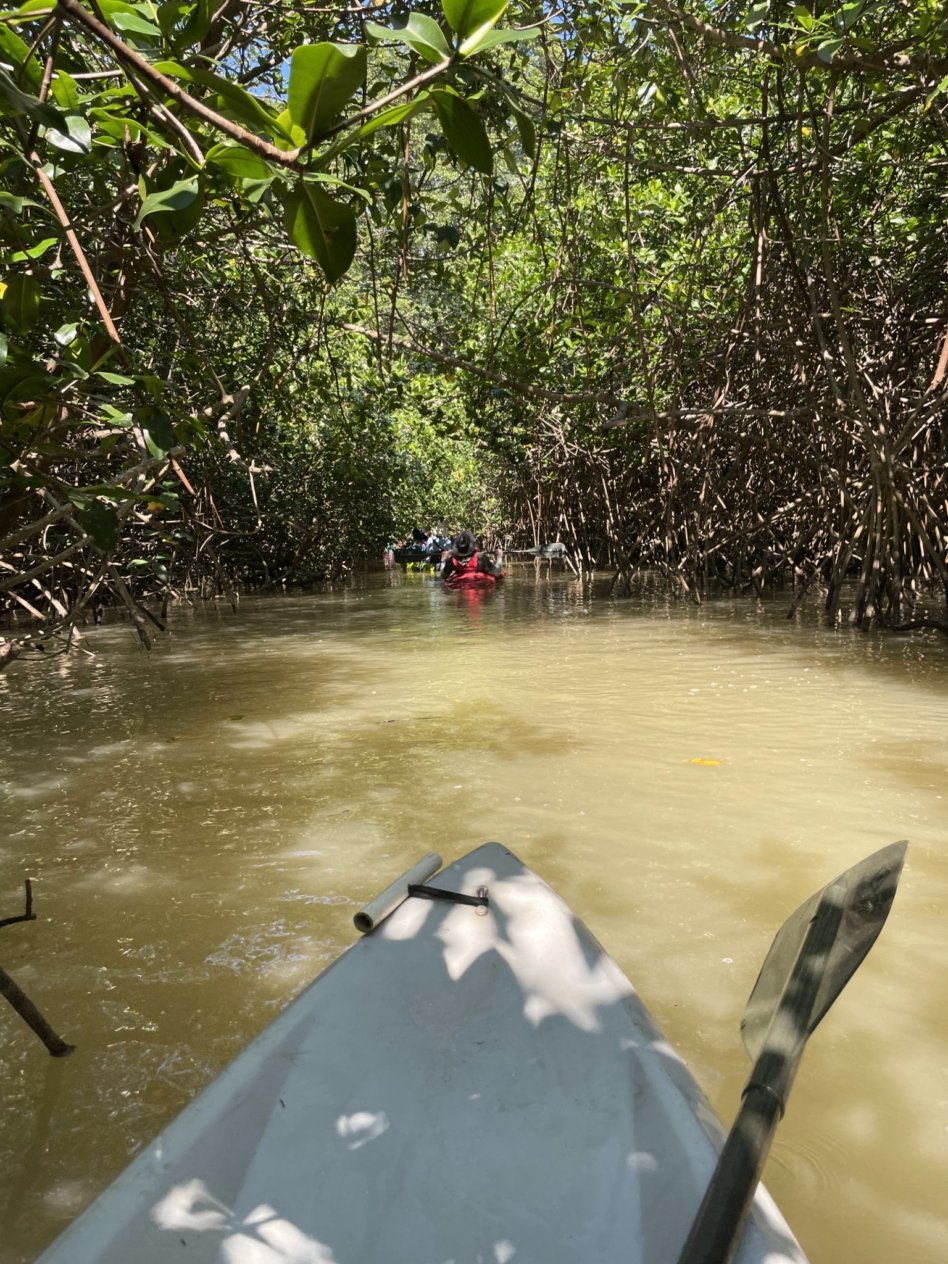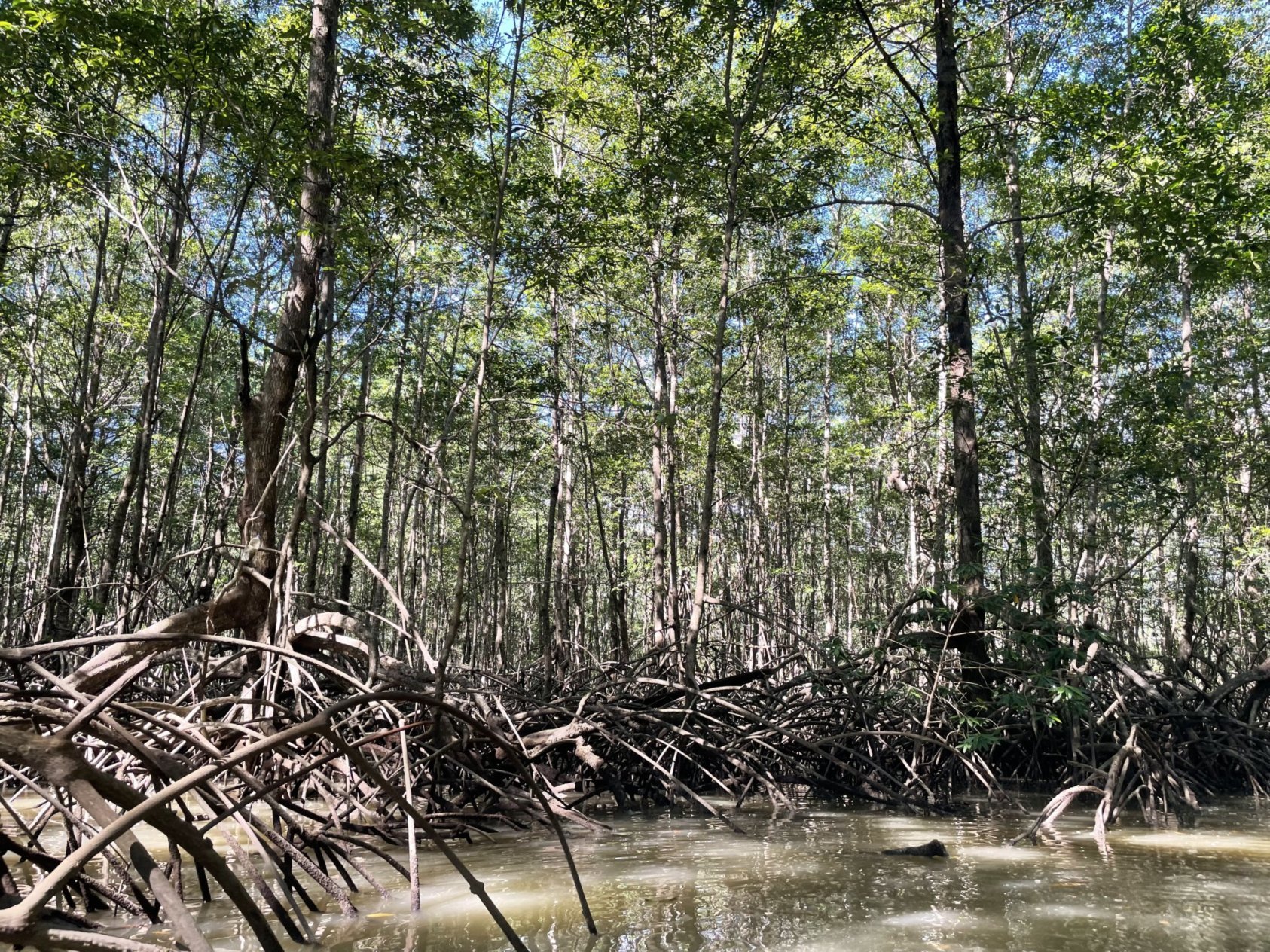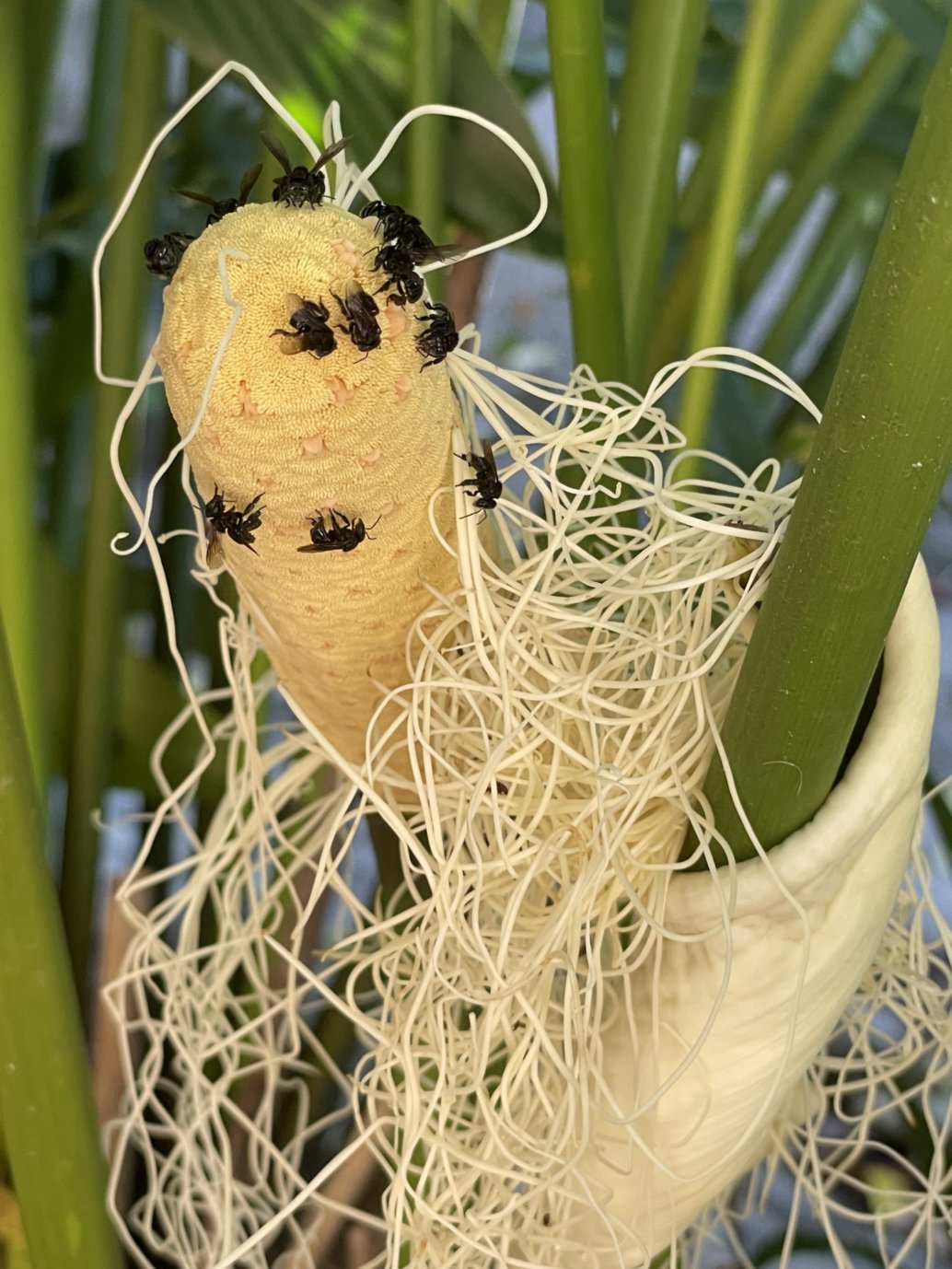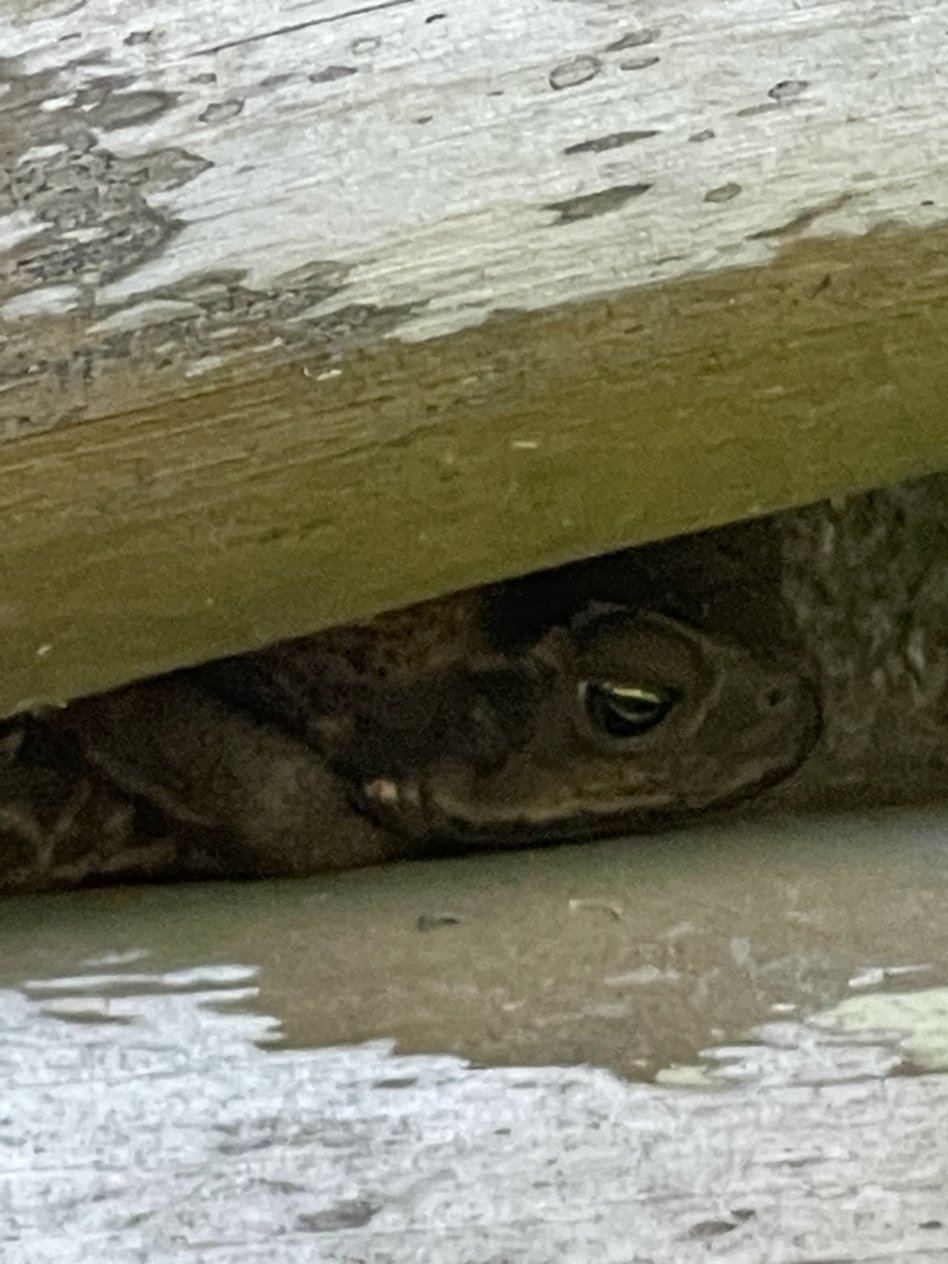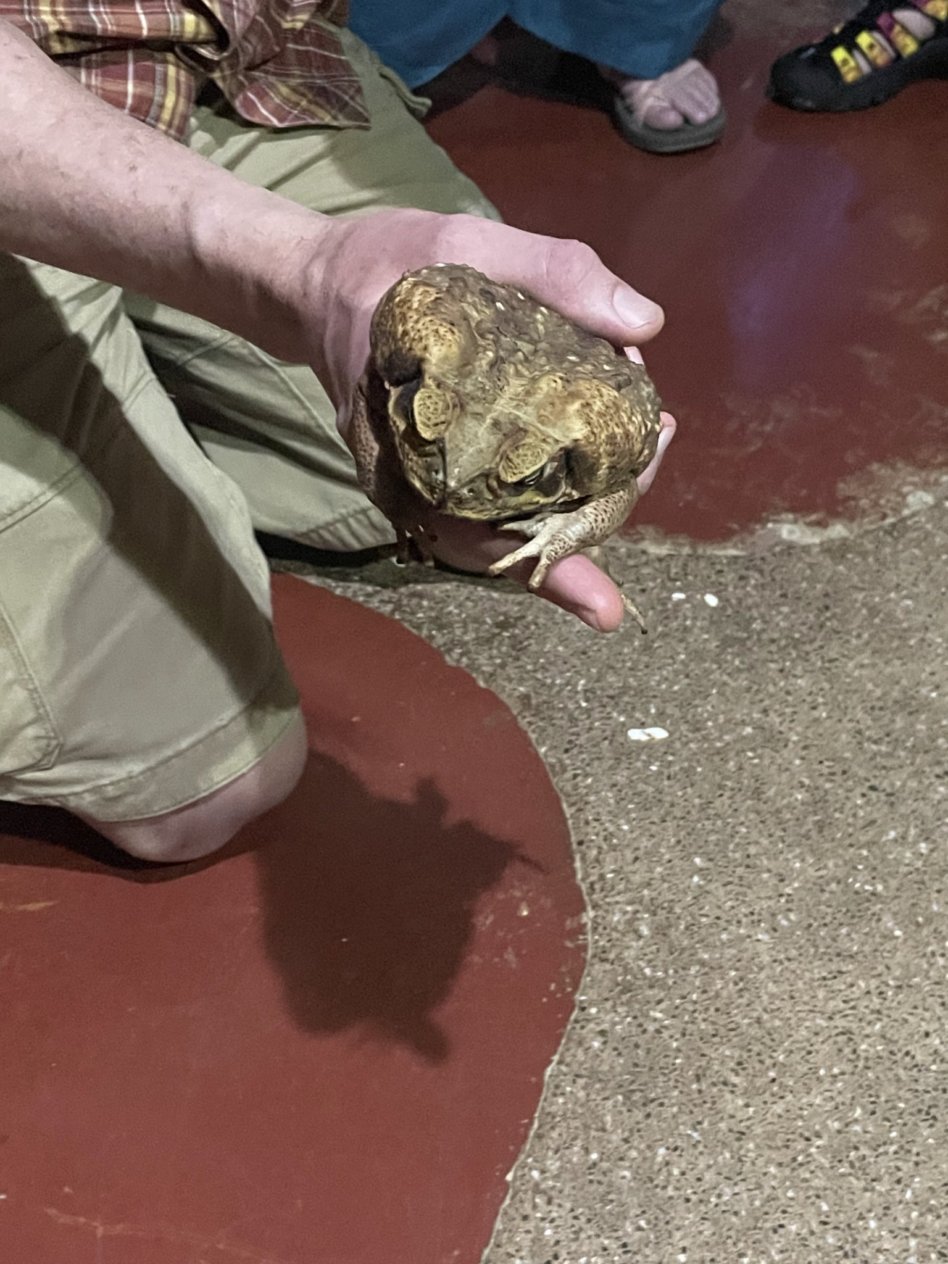Today was kayaking in the mangroves day. As I was coming down the stairs from my lodging, I saw something unusual. Oh, Chris! What is this and is it edible? That’s usually how I started my questions. The insects are stingless bees. The plant is a Panama hat palm, and evidently, it’s somewhat rare to catch it in this state. Cool. It looks like a corn cob and spaghetti to me, but I don’t think it’s edible for humans.
Good morning, mangroves! Thank goodness there was another opportunity to pair up for a kayak because I was doubtful about my cardiovascular fitness. I’m so glad I had a good partner. And when the guides ask if you would like some coconut water or water from the guide boat, you take the coconut water and watch them use a machete on a real coconut because you… are in paradise.
Mangrove forests are pretty cool. One, they protect the land by slowing down the waves which is really important, especially when a storm is coming through. Remember the 2004 Indian Ocean tsunami? Most of the affected places were where mangrove forests had been removed and the waves had nothing to slow them down. Also, mangroves live in salt water and that salt water fluctuates by six feet every day. Think about what lives in the mangroves, too. They have to contend with the fluctuation and salt water. So, mangrove forests are actually fairly quiet. We spent about ten minutes just floating so we could listen. I heard a couple of gurgles as crabs dug into the mud. A few birds called. It was peaceful.
We were given a sermon by the guides. Not a traditional sermon, but it preached and I could only bow and say “amen” when they were finished. They are witnessing the effects of climate change firsthand. They know the water because they grew up in and on the water. This is their home and they want us to know they are experiencing the effects of climate change and they need our help.
We returned to the lodge for lunch and a session about Life’s Principles (strategies seen in all living things). After dinner, we assembled into small groups and played a rousing game of Biomimicry GoFish which matches a challenge to a biological strategy. Ex: A boxfish has a hydrodynamic shape (biology) that the automobile industry could mimic (challenge). (This is an oversimplification, but you get the idea.)
And, here again, is the Panama hat palm from the morning compared to what it looked like after we returned from kayaking.
And a toad that was under the stairs going to my lodging. Every creature gets returned where it is found.



